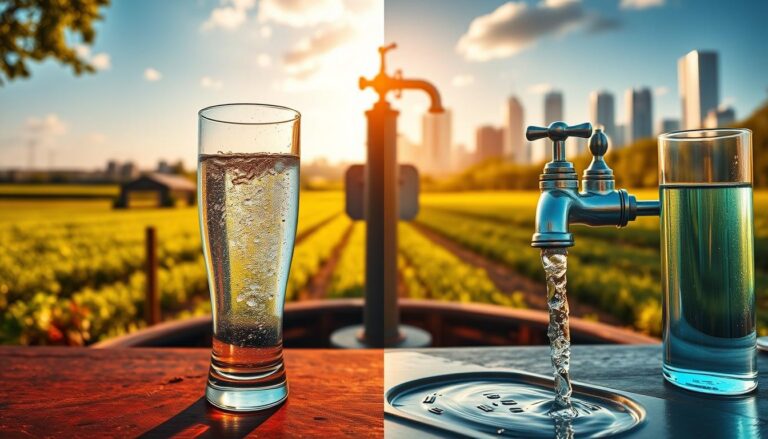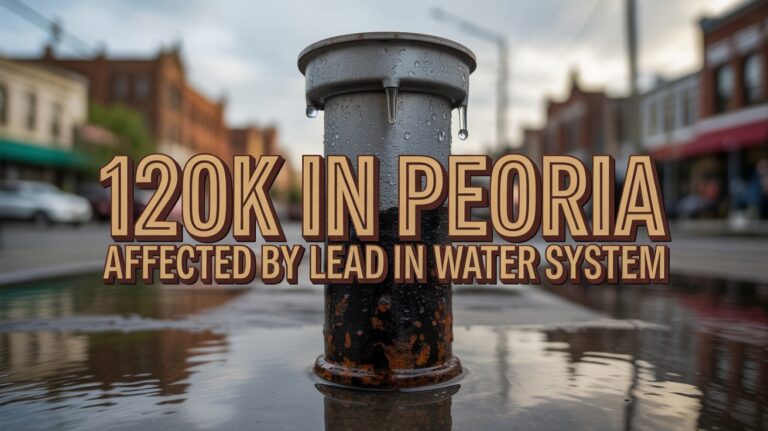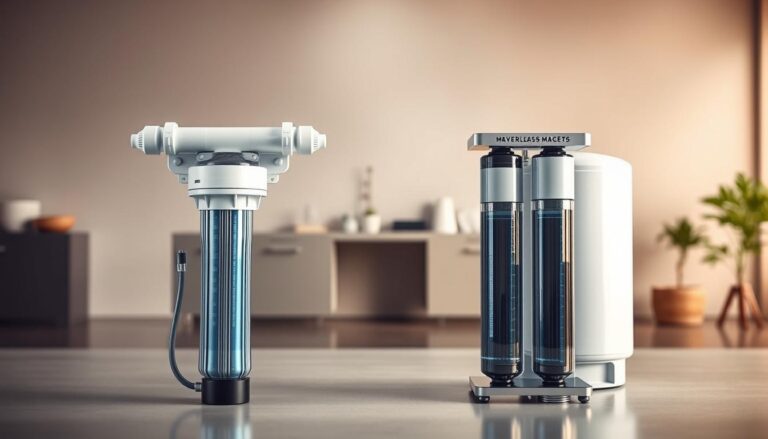10 Common Home Water Contaminants (and How to Remove Them)
Is your tap water safe to drink? With contaminants lurking in the water supply, it’s a question that deserves attention. Municipal water treatment processes are in place, but they aren’t foolproof. Contaminants like lead, chlorine, and bacteria can still find their way into your home’s water.
Understanding what’s in your water is crucial for maintaining clean and safe drinking water. We’ll explore the sources of these contaminants, their impact on health, and effective ways to remove them, ensuring you have the knowledge to protect your family’s health.
Key Takeaways
- Identify the most common water contaminants found in home water.
- Understand the health risks associated with these contaminants.
- Learn effective methods for removing contaminants from your drinking water.
- Discover how to maintain clean and safe drinking water.
- Explore the sources of water contaminants and their impact on health.
Understanding Water Quality and Common Contaminants in American Homes
Understanding the contaminants in your home’s water supply is crucial for health. Water quality can be affected by various factors, including the source of the water, treatment processes, and distribution systems.
Why Water Quality Matters
Clean water is essential for drinking, cooking, and personal hygiene. Poor water quality can lead to a range of health issues, from mild gastrointestinal problems to serious conditions like cancer. Ensuring your home’s water is free from contaminants is vital for the well-being of your family.
How Contaminants Enter Your Home Water Supply
Contaminants can enter your water supply through aging infrastructure, environmental factors, and inadequate treatment processes. For instance, lead pipes can leach into the water, posing serious health risks. Understanding these sources is the first step in mitigating their impact.
Signs Your Water May Be Contaminated
Signs of contaminated water include unusual odors, tastes, or colors. If you notice your water is cloudy, has a strange smell, or tastes bad, it may be contaminated. Regular testing is crucial to identify home water pollutants and apply appropriate water purification methods.
By understanding the importance of water quality and recognizing the signs of contamination, you can take steps to ensure your home’s water is safe and clean.
1. Chlorine and Chloramines
In the quest for clean drinking water, chlorine and chloramines are frequently utilized disinfectants. These chemicals play a crucial role in water treatment processes, aiming to reduce the risk of waterborne diseases.
What are they?
Chlorine and chloramines are disinfectants used to kill bacteria and other microbes in water. Chlorine is commonly added to water supplies for its ability to inactivate harmful pathogens. Chloramines, a combination of chlorine and ammonia, are used as an alternative to chlorine because they last longer in the water distribution system.
Health Risks
While effective against pathogens, chlorine and chloramines can have negative health effects. Consuming water with these disinfectants has been linked to certain health risks, including respiratory issues and potential carcinogenic effects. As stated by the
“The use of chlorine and chloramines in drinking water treatment is a double-edged sword; while they protect against microbial pathogens, they also introduce potential health risks.”
How to Remove Chlorine and Chloramines
To mitigate the health risks associated with chlorine and chloramines, various water filtration methods can be employed. Activated carbon filtration is a popular method for removing these disinfectants. This technology is effective in reducing the levels of chlorine and chloramines, making water safer and more palatable for consumption.
By understanding the role of chlorine and chloramines in water treatment and implementing effective removal strategies, households can enjoy cleaner, healthier drinking water.
2. Lead
Among the various household water toxins, lead is particularly dangerous due to its toxicity. Lead is a toxic metal that can enter the water supply through aging infrastructure, corroded pipes, and fixtures. Homes built before the 1980s are more likely to have lead pipes, solder, or fixtures that can leach lead into the water.
What is it?
Lead is a naturally occurring element found in small amounts in the earth’s crust. However, its presence in drinking water is primarily due to human activities, such as the use of lead-based materials in plumbing. When water sits in lead pipes or comes into contact with lead-containing materials, it can absorb lead particles, making it contaminated.
Health Risks
Exposure to lead in drinking water can have serious health consequences, particularly for children, pregnant women, and people with certain health conditions. Lead exposure has been linked to developmental delays, reduced IQ, and increased risk of behavioral problems in children. In adults, it can cause cardiovascular issues, kidney damage, and reproductive problems.
How to Remove Lead
Removing lead from drinking water typically involves using a water filtration system that is certified to remove lead. Some effective methods include:
- Activated carbon filters with lead-removing capabilities
- Reverse osmosis systems
- Distillation units
It’s crucial to choose a filtration system that is certified by a reputable third-party organization, such as NSF International, to ensure it can effectively remove lead. Regular maintenance and replacement of filter cartridges are also essential to maintain the system’s effectiveness.
3. Bacteria and Viruses
Contaminated water can harbor a variety of harmful microorganisms, including bacteria and viruses, posing significant health risks. These microorganisms can enter the water supply through various means, such as agricultural runoff, sewage, and animal waste.
What are they?
Bacteria are single-celled organisms that can cause a range of illnesses, from mild gastrointestinal issues to life-threatening diseases like cholera and typhoid fever. Viruses, on the other hand, are smaller than bacteria and require a host to replicate. They can cause diseases such as hepatitis A and norovirus.
Health Risks
The presence of bacteria and viruses in drinking water can lead to severe health consequences. Waterborne diseases can affect anyone, but certain groups like the elderly, young children, and people with weakened immune systems are more susceptible to serious illness.
How to Remove Microorganisms
Effective removal of bacteria and viruses from water involves disinfection and filtration methods. Techniques such as boiling, chlorination, and UV treatment can kill microorganisms. Advanced filtration systems, including those with activated carbon and reverse osmosis, can also remove pathogens.
| Method | Effectiveness Against Bacteria and Viruses |
|---|---|
| Boiling | Highly Effective |
| Chlorination | Effective |
| UV Treatment | Highly Effective |
| Activated Carbon Filtration | Moderately Effective |
| Reverse Osmosis | Highly Effective |

4. Pesticides and Herbicides
Pesticides and herbicides, commonly used in farming, can enter the water supply and have been linked to various health issues. These agricultural chemicals are designed to control pests and weeds but can contaminate water sources through runoff or improper disposal.
What are they?
Pesticides and herbicides are chemical substances used to manage agricultural pests and weeds. They can include a wide range of compounds, from insecticides to fungicides, each serving a specific purpose in crop management.
Health Risks
Exposure to pesticides and herbicides has been associated with several health problems, including:
- Cancer risks due to long-term exposure
- Neurological damage from certain chemical compounds
- Reproductive issues linked to exposure to specific pesticides
How to Remove Agricultural Chemicals
Effective removal of pesticides and herbicides from water can be achieved through:
- Activated Carbon Filtration: This method is highly effective in removing a wide range of organic compounds, including many pesticides and herbicides.
- Advanced Oxidation Processes (AOPs): AOPs can break down complex organic molecules, potentially removing contaminants that other methods might miss.
5. Arsenic
Water supplies can be contaminated with arsenic, a naturally occurring element that poses significant health risks to consumers. Arsenic is a concern in many regions, particularly where water sources are exposed to natural deposits or industrial contamination.
What is it?
Arsenic is a toxic element that can enter water supplies through natural geological processes or human activities such as mining and industrial waste. It is known to cause a range of health problems upon prolonged exposure.
Health Risks
Exposure to arsenic in drinking water has been linked to various health issues, including skin lesions, cancer, and cardiovascular diseases. The risk is particularly high in areas where arsenic levels exceed regulatory standards.
How to Remove Arsenic
Effective removal of arsenic from water can be achieved through several water purification methods. The most common techniques include:
- Reverse Osmosis (RO): A membrane-based filtration process that removes arsenic by forcing water through a semi-permeable membrane.
- Activated Alumina Filtration: This method uses activated alumina to adsorb arsenic from water, offering an effective solution for arsenic removal.
| Method | Effectiveness | Maintenance |
|---|---|---|
| Reverse Osmosis | High | Regular membrane replacement |
| Activated Alumina | High | Periodic regeneration or replacement of alumina |
By understanding the risks associated with arsenic and implementing effective water purification methods, homeowners can significantly reduce the presence of this contaminant in their drinking water, ensuring a safer and healthier water supply.
6. Nitrates and Nitrites
Nitrates and nitrites, compounds often found in water, pose serious health risks to consumers. These substances can enter water supplies through various means, including agricultural runoff and sewage.
Nature of Nitrates and Nitrites
Nitrates and nitrites are nitrogen-oxygen compounds that can contaminate water sources. Nitrates are particularly prevalent in water due to their solubility and mobility in soil.
Sources of Nitrates and Nitrites:
- Agricultural fertilizers
- Sewage and septic systems
- Industrial waste
Health Risks Associated with Nitrates and Nitrites
Exposure to nitrates and nitrites has been linked to several health issues, particularly for vulnerable populations such as infants and pregnant women. Nitrates can cause “blue baby syndrome,” a condition that reduces the blood’s ability to carry oxygen.
Health Risks Include:
- Methemoglobinemia (blue baby syndrome)
- Cancer risks due to long-term exposure
Effective Removal Methods
To mitigate the risks associated with nitrates and nitrites, effective removal methods must be employed. Two of the most effective technologies are ion exchange and reverse osmosis.
| Removal Method | Effectiveness | Maintenance |
|---|---|---|
| Ion Exchange | High | Regular resin replacement |
| Reverse Osmosis | Very High | Periodic membrane replacement |
By understanding the risks and implementing effective removal strategies, households can significantly reduce their exposure to nitrates and nitrites, ensuring clean water solutions for their families.
7. Hard Water Minerals (Calcium and Magnesium)
The presence of hard water minerals like calcium and magnesium in household water can lead to various plumbing and appliance problems. While these minerals are essential for human health, their abundance in water can cause scaling, reduce appliance efficiency, and affect the overall quality of water.
What are they?
Hard water minerals are primarily composed of calcium and magnesium ions. These minerals are naturally occurring and can enter the water supply through various geological formations. Calcium and magnesium are crucial for human health, contributing to bone health and other physiological functions.
Problems They Cause
High levels of calcium and magnesium in water can lead to several issues, including:
- Scaling in pipes and appliances, reducing their lifespan and efficiency.
- Increased energy consumption due to the reduced efficiency of scaled appliances.
- Skin and hair issues due to the soap scum formed when soap interacts with hard water.
As noted by water treatment experts, “Hard water can significantly impact the longevity and performance of household appliances and plumbing systems.”
How to Remove Hard Water Minerals
There are several methods to remove hard water minerals, including:
| Method | Description | Effectiveness |
|---|---|---|
| Water Softening | Replaces calcium and magnesium ions with sodium or potassium ions. | High |
| Reverse Osmosis | Uses a semi-permeable membrane to filter out minerals. | High |
| DIY Water Treatment | Magnetic or electronic devices that alter mineral properties. | Variable |
Choosing the right water filtration system or treatment method depends on the severity of the hard water issue and household needs. For many, a combination of methods may be the most effective approach.

8. PFAS (Per- and Polyfluoroalkyl Substances)
Understanding PFAS and their impact on water quality is crucial for ensuring safe drinking water. PFAS are synthetic chemicals that have been widely used in consumer products and industrial applications, leading to their presence in many water supplies.
Characteristics and Uses
PFAS are a group of chemicals used for their non-stick and stain-resistant properties. They have been found in products such as food packaging, clothing, and firefighting foam. The persistence of PFAS in the environment and their potential health risks have raised significant concerns.
Health Implications
Exposure to PFAS has been linked to various health issues, including cancer, reproductive problems, and developmental delays. The health risks associated with PFAS contamination in water supplies have prompted regulatory agencies to issue guidelines and standards for their management.
Key Health Risks Associated with PFAS:
- Cancer
- Reproductive issues
- Developmental delays
- Immune system problems
Effective Removal Methods
Several technologies have been developed to remove PFAS from contaminated water. These include:
- Activated Carbon Filtration: Effective in removing certain types of PFAS.
- Reverse Osmosis: A comprehensive method capable of removing a wide range of PFAS.
- Ion Exchange Systems: Can be used to remove PFAS, especially in certain industrial applications.
Improving water quality by removing contaminants like PFAS is essential for protecting public health. By understanding the sources and risks of PFAS and implementing effective removal strategies, communities can work towards safer drinking water.
9. Fluoride
The presence of fluoride in drinking water is a double-edged sword, offering dental benefits while potentially causing health concerns. Fluoride is a compound added to many public water supplies to help prevent tooth decay and promote oral health.
What is it?
Fluoride is a naturally occurring compound that can be found in water sources. In many communities, it is intentionally added to the water supply in a process known as community water fluoridation.
Health Considerations
While fluoride is beneficial for dental health, excessive consumption can lead to health issues such as dental fluorosis and skeletal fluorosis. It’s crucial to be aware of the fluoride levels in your drinking water.
How to Remove Excess Fluoride
To remove excess fluoride from drinking water, several methods can be employed, including:
- Activated alumina filtration
- Reverse osmosis systems
- Distillation

Using an appropriate water filtration system can help mitigate the risks associated with excessive fluoride consumption, ensuring safer drinking water.
10. Rust and Sediment
Rust and sediment in water are not just harmless particles; they can lead to serious issues in plumbing and appliances. These contaminants can enter your water supply through various means, including corroded pipes and soil runoff.
What are they?
Rust and sediment refer to the small particles that can be present in water due to the deterioration of iron pipes or the presence of soil and other materials. Rust is typically associated with the oxidation of iron, while sediment can include a variety of particles.
Problems They Cause
The presence of rust and sediment can lead to several problems, including:
- Discoloration of water, making it appear brown or cloudy
- Clogging of plumbing fixtures and appliances
- Damage to washing machines, dishwashers, and other household appliances
As noted by water quality experts, “Rust and sediment can significantly reduce the lifespan of household appliances and plumbing systems.”
“The presence of rust and sediment in water can be a sign of underlying issues in the water distribution system.”
How to Remove Rust and Sediment
Effective removal of rust and sediment can be achieved through the use of sediment filtration systems and other water treatment technologies.
| Method | Description | Effectiveness |
|---|---|---|
| Sediment Filtration | Uses filters to remove particulate matter | High |
| Water Treatment Systems | Comprehensive systems that can remove a variety of contaminants | High |
| Regular Maintenance | Regularly inspecting and maintaining plumbing and appliances | Moderate |
By implementing these solutions, homeowners can significantly improve the quality of their water, reducing the risks associated with rust and sediment.
Conclusion: Creating a Comprehensive Water Purification Strategy for Your Home
A comprehensive water purification strategy is essential for ensuring clean and safe drinking water in your home. By understanding the 10 common contaminants found in home water, you can take effective steps to remove them and improve your water quality.
Effective water purification involves a multi-step approach, including identifying potential contaminants, selecting the right removal methods, and maintaining your water purification system. By doing so, you can significantly reduce the risks associated with contaminated water and enjoy a healthier drinking water supply.
To start improving your home’s water quality, consider assessing your current water supply and identifying potential contaminants. Then, choose a suitable water purification system that addresses your specific needs. Regular maintenance of your purification system is also crucial to ensure its effectiveness over time.
By taking these steps, you can create a comprehensive water purification strategy that provides you with clean and safe drinking water, ultimately contributing to a healthier living environment.







